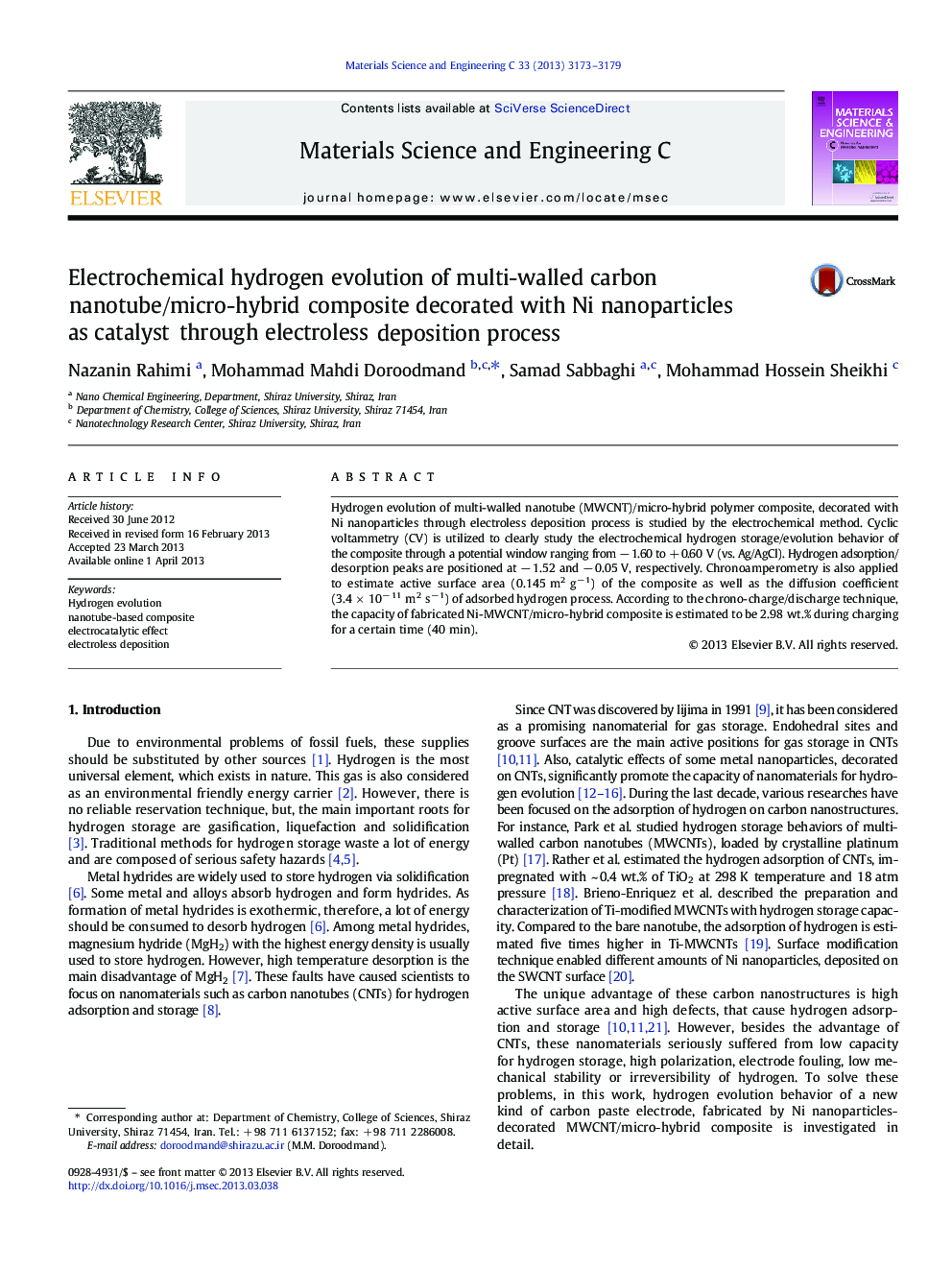| Article ID | Journal | Published Year | Pages | File Type |
|---|---|---|---|---|
| 1429162 | Materials Science and Engineering: C | 2013 | 7 Pages |
•Hydrogen storage property of CNT-based composite.•Catalytic effect evaluated for Ni nanoparticles.•Surface area evaluated by chronoamperometry.•Capacity evaluated by chrono-charge/discharge technique.
Hydrogen evolution of multi-walled nanotube (MWCNT)/micro-hybrid polymer composite, decorated with Ni nanoparticles through electroless deposition process is studied by the electrochemical method. Cyclic voltammetry (CV) is utilized to clearly study the electrochemical hydrogen storage/evolution behavior of the composite through a potential window ranging from − 1.60 to + 0.60 V (vs. Ag/AgCl). Hydrogen adsorption/desorption peaks are positioned at − 1.52 and − 0.05 V, respectively. Chronoamperometry is also applied to estimate active surface area (0.145 m2 g− 1) of the composite as well as the diffusion coefficient (3.4 × 10− 11 m2 s− 1) of adsorbed hydrogen process. According to the chrono-charge/discharge technique, the capacity of fabricated Ni-MWCNT/micro-hybrid composite is estimated to be 2.98 wt.% during charging for a certain time (40 min).
Graphical abstractFigure optionsDownload full-size imageDownload as PowerPoint slide
